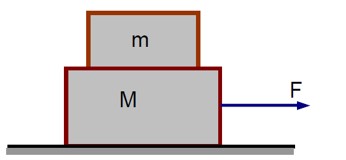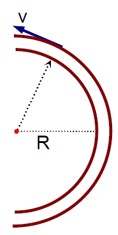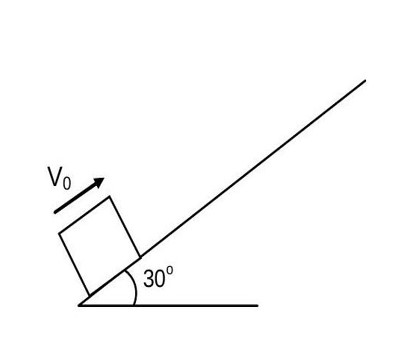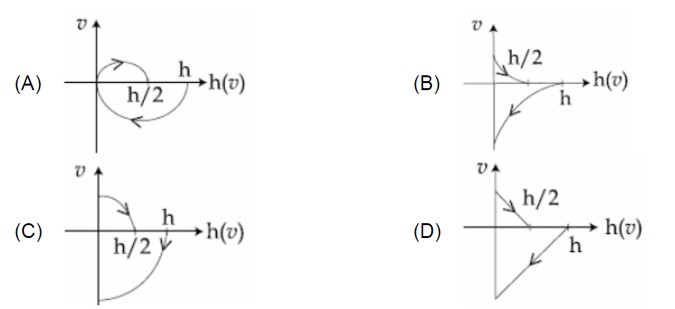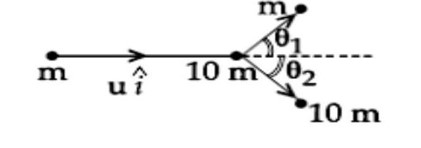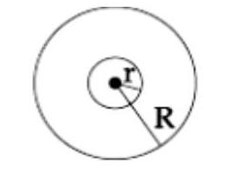Overview
Get insights from 95 questions on Overview, answered by students, alumni, and experts. You may also ask and answer any question you like about Overview
Follow Ask QuestionQuestions
Discussions
Active Users
Followers
New answer posted
2 months agoContributor-Level 10
For the combined system of mass M and m, the acceleration under an applied force F is:
a = F / (M + m)
The static friction force (f_s) on the top block (m) provides its acceleration:
f_s = MA = m * [F / (M + m)] = mF / (M + m)
For the top block not to slip, the required static friction must be less than or equal to the maximum possible static friction (μmg):
f_s ≤ μmg
mF / (M + m) ≤ μmg
F ≤ μ (M + m)g
Using the values implied in the solution:
F ≤ 21 N
New answer posted
2 months agoContributor-Level 10
N = mg - F_L
f_s = mv²/R ≤ μsN = μs (mg - F_L)
F_L = m (v²/μsR - g)
New answer posted
2 months agoContributor-Level 10
Mg + MkV² = MA = -mv (dV/dx)
Vdv = (−) (g + kV²)dx
∫? (Vdv)/ (g + kv²) = ∫? - dx
[ln (g + kV²)/2k]? = -x
ln (g/ (g + ku²) = −2kx
x = (1/2k)ln (1 + ku²/g)
New answer posted
2 months agoContributor-Level 10
mdv? /dt = kv? (1) and mdv? /dt = kv?
(2)/ (1) ⇒ dv? /dv? = v? /v?
v? dv? = v? dv?
v? ² = v? ² + C
v? ² – v? ² = C = Constant
Now, v? * a? = (v? î + v? ) * (k/m) (v? î + v? )
= (k/m) [v? ²k? – v? ²k? ] = (k/m) (v? ² – v? ²)k? = Constant.
New question posted
2 months agoNew answer posted
2 months agoContributor-Level 10
σ4πr² + σ4πR² = Q ⇒ σ = Q/ (4π (R²+r²)
V_c = kq? /r + kq? /R = k (σ4πr²)/r + k (σ4πR²)/R = kσ4π (r+R)
= K (Q/ (R²+r²) (R+r)
Taking an Exam? Selecting a College?
Get authentic answers from experts, students and alumni that you won't find anywhere else
Sign Up on ShikshaOn Shiksha, get access to
- 65k Colleges
- 1.2k Exams
- 679k Reviews
- 1800k Answers

